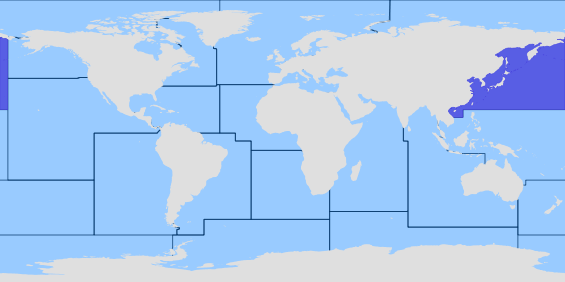EngelsThe carapace has the median teeth before the crevical groove blunt and inconspicuous: the rostral tooth is reduced to a tubercle, the pregastric tooth is replaced by a double row of 1 or 2 tubercles and a few inconspicuous median tubercles. The gastric tooth is the most conspicuous, it isbroad and blunt and bears a double row of tubercles. The surface of the carapace is very uneven and the tubercles are high. Between the postrostral and branchial carinae there are a few tubercles and many smooth areas. The abdomen shows a distinct median longitudinal carina on somites 2 to 5, that of somite 3 is by far the highest, and (like the one fo somite 4) bears numerous tubercles laterally. Somite 1 is quite smooth, and has the transverse groove only slightly noticeable in the extreme lateral parts. The exposed part of the following somites show no arborescent pattern, but in each somite there is a wide transverse groove there. In somite 2, both before and behind this groove there is a perfectly smooth broad ridge, a character in which the species differs from most others. In the following somites these ridges are tuberculate. In somites 4 to 6 the posterior margin is tuberculate. The fourth antennal segment has a sharp and high oblique median carina. Outside the carina the upper surface of the segment shows a row of tubercles. The outer margin of the segment bears 4 or 5 teeth (apical tooth of the segment not included), the inner margin has 5 to 7 teeth of irregular size. The anterior margin of the thoracic sternum is deeply U-shapedly incised. Each of the thoracic sternites bears a rounded median tubercle. The dactyli of pereiopods 3 to 5 show two short fringes of hair each. Colour: the dorsal surface of the body is greyish or purplish brown with darker spots. The distal segment of the antenna is often lighter. The first abdominal somite shows dorsally often a dark blue colour (Ref. 252).
Vertaling weergeven
Vertaald uit het Engels door BING
Deze vertaling is louter indicatief: Op grond van de beperkte kwaliteit van de brontekst zijn morfologische omschrijvingen uitsluitend beschikbaar in het Engels in de BETA-versie van het systeem. In toekomstige uitgaven zal ook meertalige informatie beschikbaar komen.
NederlandsHet kopborststuk is de mediaan tanden voordat de crevical groef bot en onopvallende: de rostraal tand is teruggebracht tot een tuberculum, de pregastric tand is vervangen door een dubbele rij van 1 of 2 tubercles en een paar onopvallende mediaan tubercles. De maag tand is de meest opvallende, het isbroad en blunt en draagt een dubbele rij van tubercles. Het oppervlak van het kopborststuk is zeer ongelijk en de tubercles zijn hoog. Tussen de postrostral en branchial carinae zijn er een paar tubercles en vele goede gebieden. De buik bevat een afzonderlijke mediaan longitudinale carina op somieten 2 tot en met 5, die van Somiet 3 is veruit de hoogste, en lateraal talrijke tubercles (zoals de één fo Somiet 4) draagt. Somiet 1 is vrij glad, en heeft de dwarse groef alleen iets merkbaar in de extreme laterale delen. Het blootgestelde gedeelte van de volgende somieten Toon geen Boomvormige patroon, maar in elke Somiet bestaat er een brede dwarse groef. In Somiet 2 is zowel vóór als achter deze groef er een perfect glad brede bergkam, een teken waarin de soorten van de meeste anderen verschilt. In de volgende somieten zijn deze ruggen tuberculate. De achterste marge is in somieten 4 tot en met 6 tuberculate. Het vierde antennal segment heeft een scherp en hoge schuine mediaan carina. Buiten toont de carina het bovenoppervlak van het segment een rij van tubercles. De buitenste marge van het segment draagt 4 of 5 tanden (apicaal tand van het segment niet inbegrepen), de innerlijke marge heeft 5 tot en met 7 tanden van onregelmatige grootte. De voorste rand van de thoracale borstbeen is U-shapedly diep ingesneden. Elk van de thoracale sternites draagt een afgeronde mediaan tuberculum. De dactyli van 3 tot en met 5 daaropvolgende twee korte marge van haar elke weergeven Kleur: het dorsale oppervlak van het lichaam is grijzig of paars bruin met donkere vlekken. De distale segment van de antenne is vaak lichter. De eerste abdominale Somiet toont dorsally vaak een donker blauwe kl
 Afbeelding niet beschikbaar
Afbeelding niet beschikbaar


